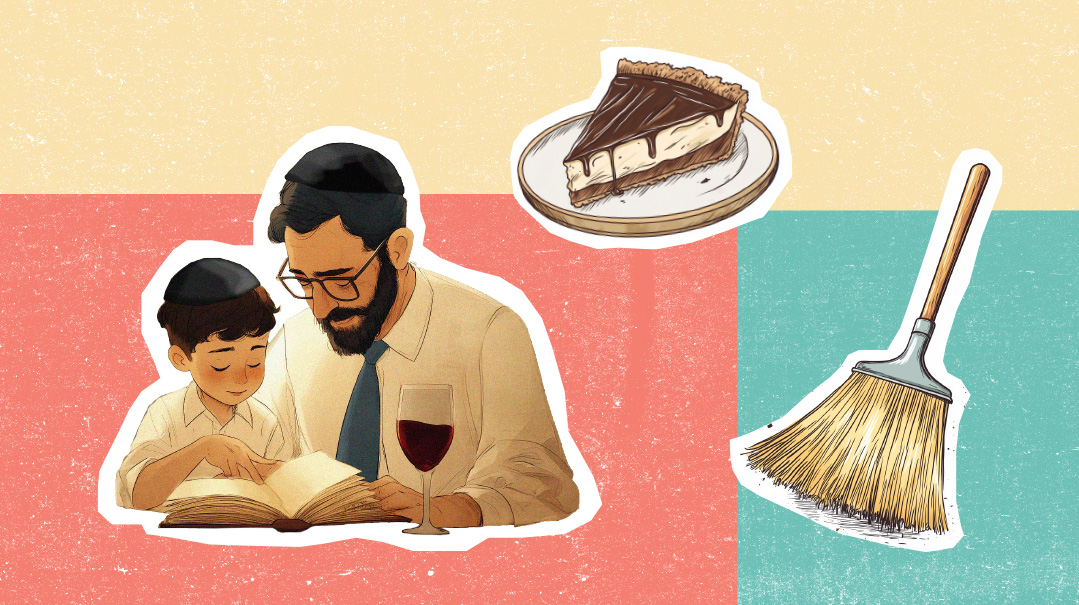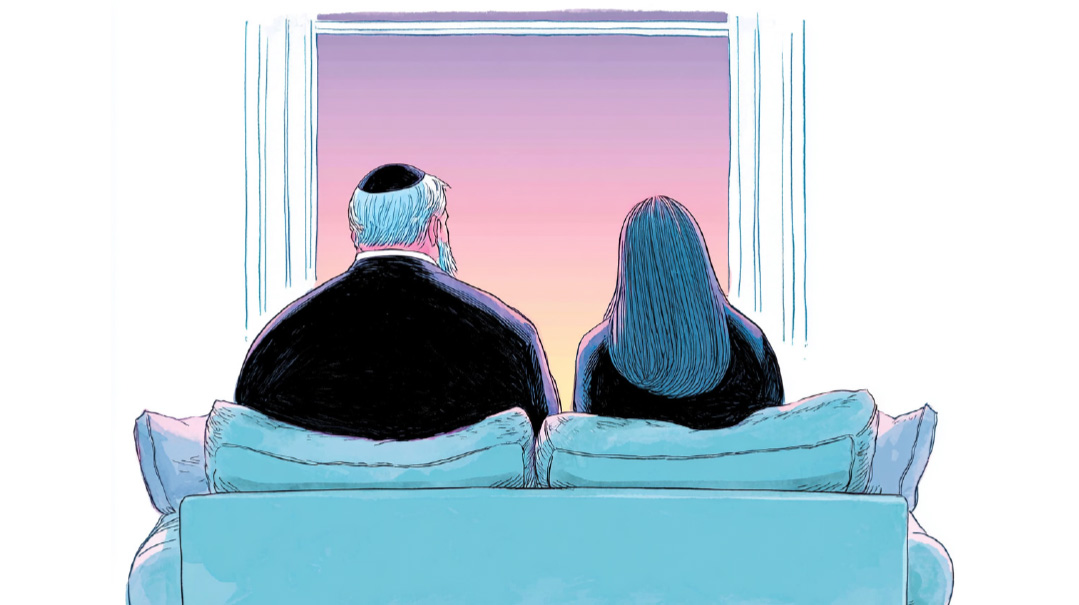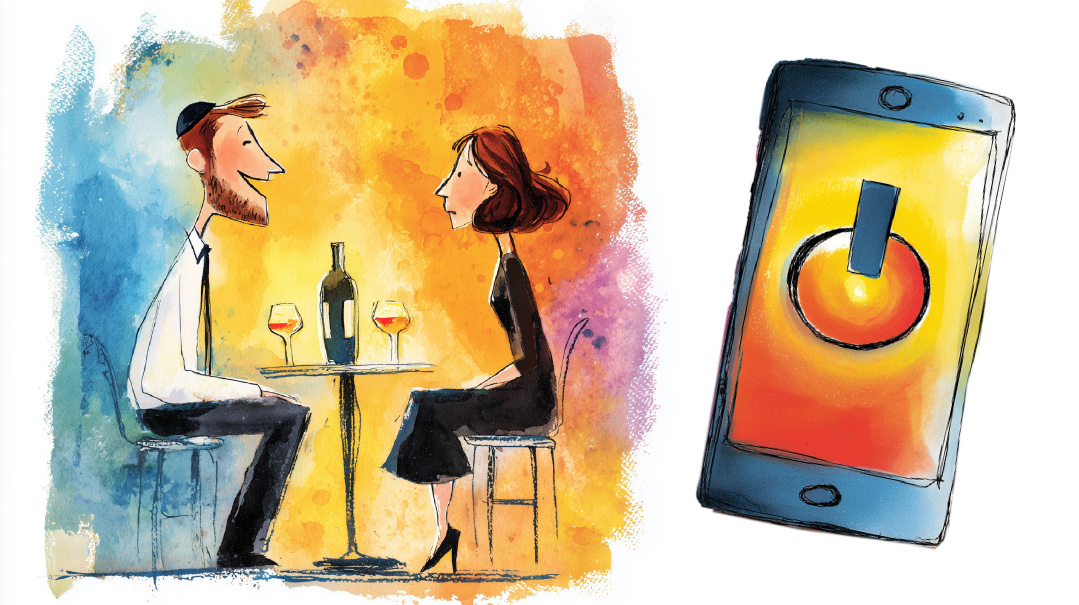Bring the Seder to Life
| April 1, 2025How to make your Seder the ultimate chinuch experience

Bring the Seder to Life
By Shona Kaisman-Schwartz
During the Seder, we fulfill “V’higadeta l’vincha,” the mitzvah to teach our children about Yetzias Mitzrayim and infuse them with emunah. Our Chachamim designed the Seder as the ultimate chinuch experience, with the Haggadah structured around children’s questions. Here are a few meaningful ways to bring this night alive for our children:
1. Divrei Torah Prep Ahead
Divide up the divrei Torah so that there’s no tension over who says what when, and we don’t ask the kids to concentrate for too long. You could divide the divrei Torah up by topic or time, or allow certain kids to share at different points during the seder. Maybe divide it up using a raffle. Another idea? Offer treats/goodies/points to any child who asks a question on a sibling’s devar Torah! This helps kids to stay engaged while their siblings are speaking.
2. The Shalsheles HaDoros Chain
Sometimes, imagining things “long ago” can feel out of reach. Make history come alive! Get a box of 150 paper clips. When discussing the generations from Matan Torah until today, help the kids calculate how many links represent each generation from Matan Torah. (If we say a generation is about 25 years, that would be 3300 divided by 25!) Make a 132 paper clip chain (yes, this keeps the little ones busy while everyone reads.)
Suddenly, abstract history becomes a tangible chain they can touch and understand.
Bonus points discussion: See how many generations the kids can remember facts about, starting with grandparents, moving backward, even if they can only remember the name of a town or one story about their ancestors.
3. Clue Cards
Hide cards with questions on the Haggadah, with clues on them that will lead them to the location of the next hidden card. An example: Who comes to visit us at the Seder? Answer: Eliyahu Hanavi. Clue: Eliyahu also visited us at this time three years ago. (Hide the next card in three-year-old’s baby book where his bris pictures are.) Another example: What do the three matzos represent? Answer: Kohein, Levi, Yisrael. Clue: the brachah that the Kohanim say (Hide the next card in a siddur on the siddur shelf at the page of Bircas Kohanim)
4. Dayeinu Personal Hakaras Hatov
After singing Dayeinu, invite each person to share a “Dayeinu moment” when they felt Hashem’s kindness this year, which will reinforce the middah of hakaras hatov and personalize the experience. In our family, this is a highlight of the evening and many of us come to the Seder with ideas to share!
5. Arba’ah Banim props
Ask each child to find a prop from the house which represents each of the four sons. Let the kids share their explanation for why this item is connected to them. This will lead to deeper engagement over what each son represents. Some suggestions might include a Chumash, an English bentsher, glasses, a pacifier, sour food, Bobby’s dentures, etc. Kids can show amazing creativity!
6. Mirror Moment
Place a small dollar-store mirror in a box at each child’s place setting. When you discuss the history of the Jewish people, tell them that in the box is the secret to the future of Bnei Yisrael. Build up excitement, and when they open it during the Seder, explain they’re looking at an essential part of Bnei Yisrael’s future — themselves! This tangible reminder of their personal connection to our collective journey is powerful.
7. Vehi She’amdah
At Vehi She’amdah, print the lyrics to Yaakov Shwekey’s “We are a Miracle” and see how much Jewish history the kids know — and just how many times Hashem has saved us!
Shona Kaisman-Schwartz is an educational consultant.She is the author of How To Stop Caring What Others Think: For Real and the upcoming book, Always On: An Interactive Parents’ Guide to the (Dis)Connected Generation.
True Financial Freedom
By Tsippi Gross and Rivky Rothenberg
“Each month we put away some money for Yom Tov. We spent exactly the amount we budgeted for on Purim and now that Pesach is around the corner, we’ve got it covered!”
Does that sound like you?
We’re kind of joking because if this sounds like you, you’re on the rare side.
This is probably more accurate: “We basically make enough to get through each month. But Pesach is around the corner and between clothing, shoes, food, dishes, appliances, entertainment, afikomen, cleaning help, we’re talking thousands…”
Or you might be thinking, “We’re struggling as it is…How will we manage?”
Although Pesach expenses aren’t unexpected (that’s a conversation in and of itself!) there’s no denying that the financial pressures it brings can be intense. Here are some ideas to ease the pressure:
Think about what simchas Yom Tov means to your family and plan your purchases and menus around that. Just spending more money won’t necessarily increase simchas Yom Tov. Customize it!
Make frugal choices, even over small things. Serving watermelon for dessert for one meal instead of hazelnut and pistachio creme brûlée with Viennese crunch won’t kill anyone.
Think about what you’re trying to accomplish with Chol Hamoed activities: fun family memories. They can be made with a nice (free) hike or scavenger hunt. Plan it now so that you don’t get pressured into something last minute.
Plan and budget with your spouse so that you’re on the same page and there will be no tension or disagreements between you in real time.
Find a natural-sounding way (even if it sounds corny at first) to reframe your approach so that you and your family don’t feel so burdened by the cost of Pesach. Challenge yourself to say these out loud so your children can hear it. For example, instead of, “Ugh, Pesach is so expensive,” try “Wow, Pesach is such a special time of year; we get to have the whole family together,” or “We’re so lucky to be Jewish and use our resources for mitzvos.”
Tsippi Gross is a business consultant and Rivky Rothenberg is a CPA. Together they started Ashir, a nonprofit that provides financial training for communities and families.
Serving You
By Hadassah Eventsur
I often tell this to my clients: Your home is meant to serve you. You’re not meant to serve it. This means that if you care for your home at the expense of your well-being, it’s time to modify how you relate to and tackle your daily care tasks. On the same note, you’re not meant to “serve” your Pesach. It’s meant to “serve” you.
What does it look like when you “serve” your Pesach? Perhaps you clean beyond what is necessary in order to feel good about yourself. Maybe you decline help from family members because you can do it “better.” Perhaps you’re busy purchasing the latest trendy outfits to “look” the part.
When you’re filled with anxiety, even dread, and are comparing yourself to others, you can be sure you’re Yom Tov isn’t serving you. And when you work within your capabilities, you’ll experience the joy of Yom Tov “serving” you.
Hadassah Eventsur MS, OTR/L, is an occupational therapist, certified life coach, and founder of MindfullyYou to support women struggling with executive functioning.
(Originally featured in Family First, Issue 938)
Oops! We could not locate your form.







